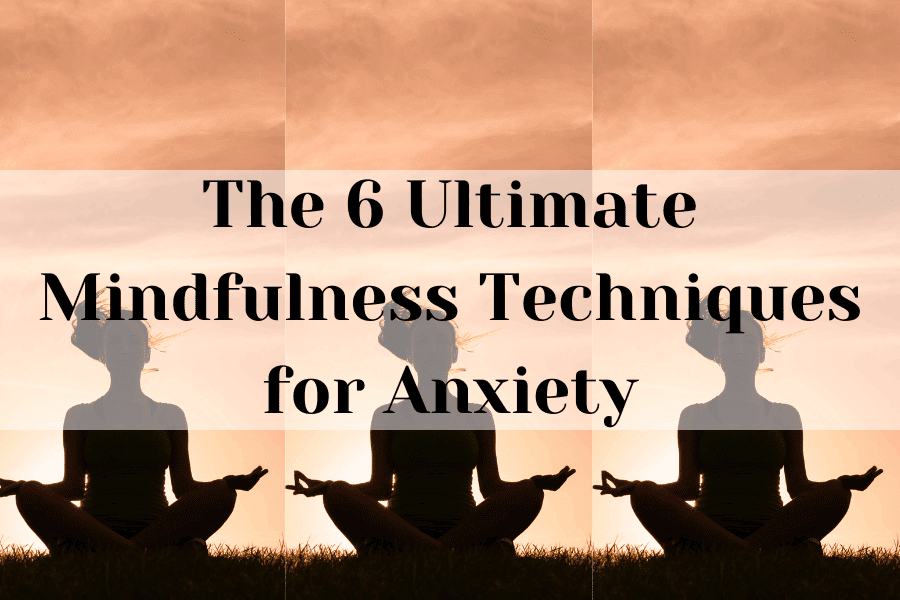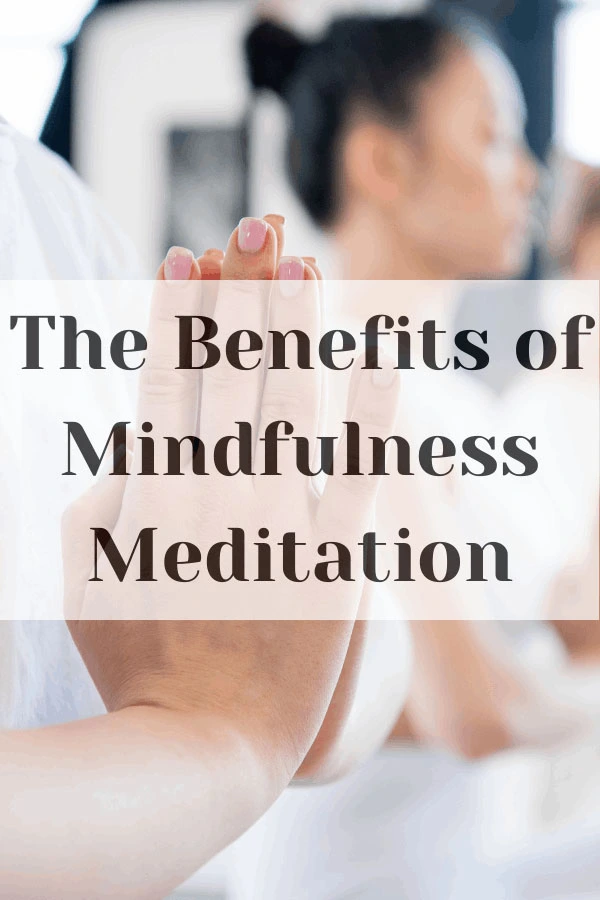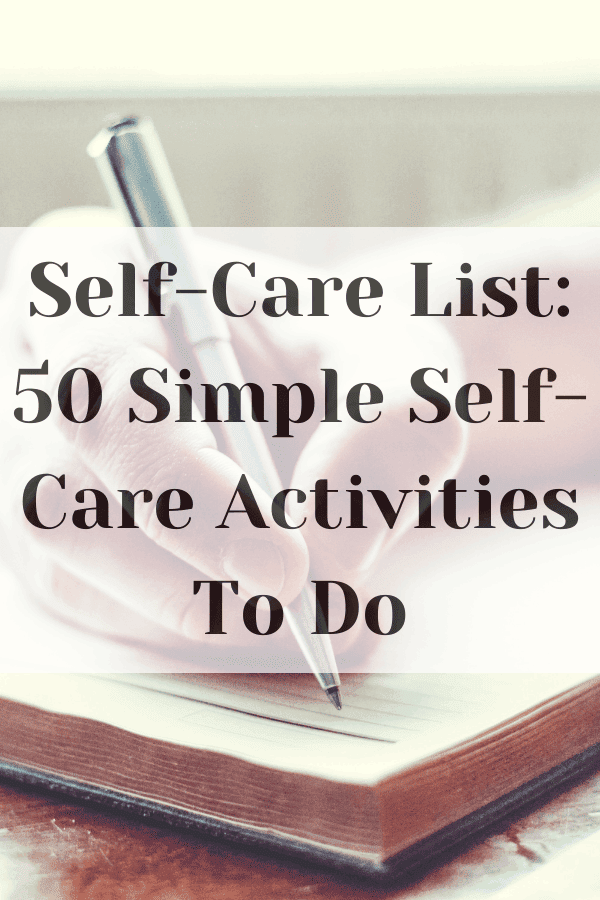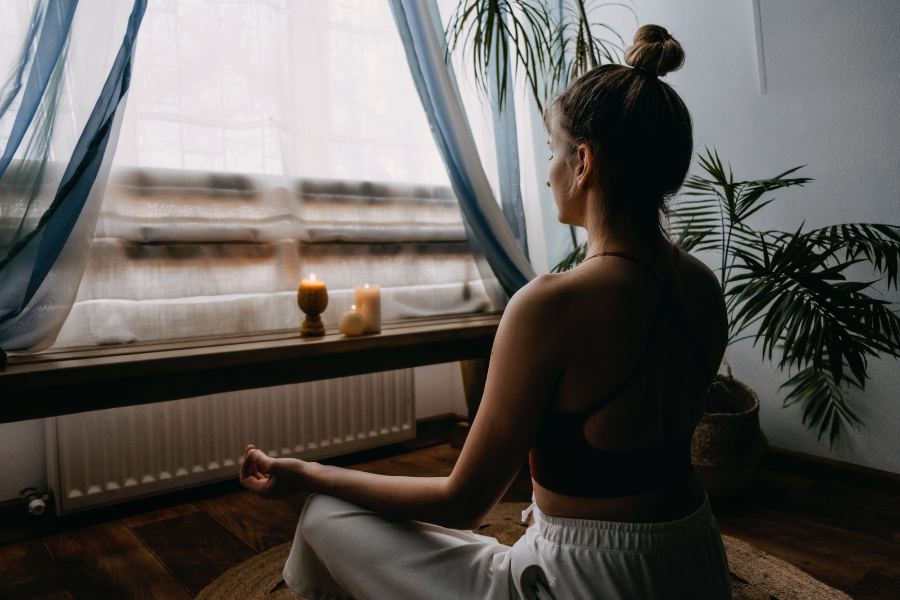The 6 Ultimate Mindfulness Techniques For Anxiety

Understanding the prevalence of anxiety is crucial. According to recent studies, a significant percentage of the global population grapples with anxiety-related challenges. From the pressure to meet deadlines to the uncertainties of the future, anxiety manifests in diverse ways, impacting our mental and emotional health.
Now, let’s talk solutions. Enter mindfulness techniques for anxiety – an invaluable ally in the quest for inner peace. Addressing anxiety head-on is not just about managing symptoms; it’s about cultivating a mindset that promotes resilience and calm in the face of life’s storms.
Mindfulness Techniques For Anxiety

What is Mindfulness
The essence of mindfulness
Mindfulness, at its core, is the art of being fully present. It’s about consciously immersing ourselves in the current moment, embracing it without judgment. This simple yet profound shift in focus cultivates awareness of our thoughts, emotions, and surroundings. This is one of many key mindfulness techniques for anxiety.
Navigating the present
At times, life feels like a whirlwind of responsibilities and uncertainties, fostering anxiety. Mindfulness serves as a steady anchor in this storm. By intentionally directing our attention to the present, we step out of the cycle of worry about the past or future.
Simplicity in practice
Mindfulness isn’t a complex endeavour. It’s a call to break free from autopilot mode, inviting us to savour each moment – whether it’s a sip of tea, a walk, or a daily task. This intentional focus on the present moment forms the foundation of mindfulness practice.
Anxiety management
The anatomy of anxiety
Understanding how anxiety operates is crucial. Often fueled by hypothetical scenarios and “what-ifs,” anxiety thrives in the realm of the past and future. Mindfulness disrupts this pattern by encouraging us to ground ourselves in the now.
Shifting perspectives
Mindfulness provides a unique vantage point. Rather than being swept away by anxious thoughts, it fosters an observer’s perspective. Picture it as watching clouds pass in the sky. This shift in viewpoint can be transformative, offering a sense of control amid life’s uncertainties.
Tools for present-moment awareness
Mindfulness techniques for anxiety, which we’ll explore further, act as tools for fostering present-moment awareness. Each technique contributes to building a shield against the storms of anxiety, reinforcing our capacity to stay centred.
Benefits of Mindfulness for Anxiety
Reduced stress levels
In the hustle and bustle of modern life, stress can feel like an unwelcome companion. Mindfulness techniques for anxiety act as a soothing balm, helping to dial down stress levels. By redirecting our attention to the present moment, we break free from the cycle of stress-inducing thoughts, fostering a calmer and more composed state of mind.
Improved emotional regulation
One of the remarkable gifts of mindfulness is its impact on emotional regulation. Instead of being carried away by intense emotions, mindfulness encourages a mindful pause. It’s not about suppressing emotions but understanding and responding to them with a measured and thoughtful approach. This shift cultivates emotional resilience, allowing us to navigate challenging moments with grace.
Enhanced focus and concentration
Ever find your mind wandering in the midst of a task, only to be derailed by anxious thoughts? Mindfulness acts as a spotlight for the mind. Through practices like meditation, it sharpens our ability to concentrate on the task at hand. By training the mind to return to the present moment, mindfulness enhances focus, making it a powerful antidote to the scatterbrained effects of anxiety.
These benefits are not distant promises but tangible outcomes of integrating mindfulness into our daily lives. As we explore mindfulness techniques for anxiety in the upcoming sections, keep these benefits in mind. They serve as guideposts on our journey to a more centred and resilient way of being. Let’s continue uncovering the transformative potential of mindfulness for anxiety relief.
Mindfulness Techniques
Deep breathing exercises
Deep breathing
Deep breathing is a cornerstone of mindfulness, offering a quick route to calm the nervous system. It involves intentional, slow inhalations and exhalations. This method engages the diaphragm, signalling the body to relax.
Step-by-step guide on deep breathing for anxiety
-
- Find a quiet space and sit or lie down comfortably.
- Inhale deeply through your nose, counting to four.
- Hold your breath for a count of four.
- Exhale slowly through pursed lips, counting to four.
- Repeat this cycle, focusing on the rhythm of your breath. Gradually extend the counts as you become more comfortable.
Mindful meditation
Introduction to meditation
Meditation is the art of stilling the mind and finding peace in the present. It’s not about emptying the mind but rather observing thoughts without attachment. Mindful meditation creates a mental sanctuary, a place of calm amidst the noise of daily life.
Simple meditation techniques for anxiety relief
- Breath Awareness: Focus on your breath, gently bringing your attention back whenever your mind wanders.
- Loving-Kindness Meditation: Cultivate feelings of compassion and goodwill, directing them towards yourself and others.
- Body Scan Meditation: Slowly scan your body from head to toe, releasing tension and fostering awareness.
Grounding techniques
Overview of grounding exercises
Grounding techniques anchor us in the present, grounding scattered thoughts. These exercises often involve engaging the senses to reconnect with the immediate environment.
Examples of grounding techniques
- 5-4-3-2-1 Technique: Acknowledge five things you can see, four things you can touch, three things you can hear, two things you can smell, and one thing you can taste.
- Mindful Walking: Focus on each step, the sensation of your feet meeting the ground, and your surroundings.
Body scan
Explanation of body scan mindfulness
The body scan is a mindfulness practice that involves systematically bringing attention to different parts of the body. It promotes relaxation by cultivating awareness of bodily sensations.
How to perform a body scan for anxiety
- Lie down in a comfortable position.
- Direct your attention to your toes, gradually moving up through each part of your body.
- Notice any sensations without judgment, allowing tension to release as you bring awareness to each area.
- Conclude by focusing on your breath and the overall sense of calm in your body.
-
-
These mindfulness techniques for anxiety form a toolkit for relief. Experiment with each, finding what resonates best with you. In the next sections, we’ll explore how to seamlessly integrate mindfulness into daily life for enduring benefits. Let’s continue this journey toward a more mindful and-centred existence.
Incorporating Mindfulness into Daily Life
Mindful eating
Benefits of mindful eating
Mindful eating is not just about what’s on your plate; it’s a holistic experience. Benefits include improved digestion, enhanced appreciation for food, and a greater connection between mind and body. By savouring each bite, you cultivate a healthier relationship with food, potentially reducing overeating and stress-related eating.
Tips for incorporating mindfulness into meals:
- Engage Your Senses: Notice the colours, textures, and aromas of your food. Let each bite be a sensory experience.
- Eat Without Distractions: Turn off screens and put away devices. Focus solely on the act of eating.
- Chew Slowly: Take your time chewing. Not only does this aid digestion, but it also allows you to truly taste and enjoy your food.
Mindful Walking
Walking as a mindful practice
Walking is not just a means of getting from point A to B; it can be a mindful journey. Engage with each step, appreciating the rhythm of your gait and the sensation of movement. Mindful walking is an opportunity to connect with your surroundings and bring your attention to the present moment.
Suggestions for mindful walking exercises
- Focus on Your Breath: Sync your breath with your steps. Inhale for a few steps, exhale for a few. This helps anchor your attention to the present.
- Notice Your Surroundings: Pay attention to the sights, sounds, and smells around you. Let your environment become part of your mindful experience.
- Walk with Intention: Instead of rushing, walk with purpose. Each step becomes a deliberate act, fostering a sense of presence.
By infusing mindfulness into eating and walking, two activities often done on autopilot, you transform them into opportunities for self-awareness. As we continue, we’ll explore how building mindfulness into daily routines can create a profound shift in your overall well-being. Join me in discovering the simplicity and effectiveness of these practices which is fundamental to introducing key mindfulness techniques for anxiety.
Building a Mindfulness Habit
Setting realistic goals
Why set goals for mindfulness
Setting goals provides a roadmap for your mindfulness journey. Realistic and achievable goals help you measure progress and create a sense of accomplishment. The key is to start small, and gradually incorporate mindfulness into your routine.
Examples of realistic goals
- Five-Minute Daily Meditation: Begin with short, daily meditation sessions. As you build consistency, you can gradually extend the duration.
- Mindful Breathing Breaks: Set a goal to take short breaks during the day for focused, mindful breathing. Even a minute or two can make a significant difference.
Overcoming challenges in establishing a mindfulness routine
Common challenges:
- Time Constraints: Feeling too busy? Start by integrating mindfulness into existing activities, like mindful eating or taking brief mindful pauses during the day.
- Restlessness or Impatience: It’s normal for the mind to resist stillness initially. Be patient with yourself. Consistency is more important than perfection.
- Overthinking: Don’t overcomplicate mindfulness. It’s about simplicity. If your mind starts overanalysing, gently guide it back to the present moment.
Strategies to overcome challenges
- Anchor to Existing Habits: Pair mindfulness with an existing habit, like practising deep breathing before your morning coffee.
- Mindfulness Apps: Use apps that offer guided sessions. They provide structure and support, especially for beginners.
- Accountability Partners: Share your mindfulness goals with a friend or family member. Having someone to check in with adds a social element to your practice.
Building a mindfulness habit is a gradual process. By setting achievable goals and acknowledging potential challenges, you’re laying the foundation for a sustainable practice. Remember, it’s not about perfection; it’s about progress. Let’s explore these strategies together, making mindfulness an integral part of your daily life.
Round Up!
In this journey through mindfulness techniques for anxiety, we’ve uncovered a treasure trove of practices that can transform the way we navigate the challenges of daily life. Let’s take a moment to recap the key insights:
Recap of mindfulness techniques for anxiety
- Deep Breathing: A simple yet potent practice to calm the mind and reduce stress.
- Mindful Meditation: An exploration into the stillness within, fostering emotional resilience.
- Grounding Techniques: Tools to anchor ourselves in the present, disrupting the cycle of anxiety.
- Body Scan Mindfulness: A practice of gentle awareness, releasing tension and promoting relaxation.
- Incorporating Mindfulness into Daily Life: From mindful eating to walking, integrating mindfulness seamlessly into routine activities.
- Building a Mindfulness Habit: Setting realistic goals and overcoming challenges to make mindfulness a consistent part of life.
As you embark on your mindfulness journey and explore the various mindfulness techniques for anxiety, remember that there’s no one-size-fits-all approach. What works for others might need a bit of customisation for you. Embrace the experimentation. Notice what resonates with your unique self.
It’s not about perfection or reaching some unattainable state of constant calm. Mindfulness is a practice, a way of being that evolves over time. Be patient with yourself, celebrate small victories, and acknowledge that each moment of presence is a step towards a more centred and grounded life.
The world of mindfulness is vast, and your exploration has just begun. Continue to discover, adapt, and make these techniques your own. May your journey be filled with moments of peace, clarity, and a profound sense of well-being. Thank you for joining us on this exploration of mindfulness techniques for anxiety relief. Until next time, breathe, be present, and nurture your inner calm.
This blog post was about mindfulness techniques for anxiety
Share this post: on Twitter on Facebook on Google+




